There was a time when selling products internationally required a lot of resources, capital, and infrastructure. One had to tackle challenges like local business laws, currency exchange, taxes, shipping rates, etc. However, things have now changed. Today with the help of online e-commerce platforms like Shopify, small and large businesses can sell their products and services globally through their online store.
To offer a localized shopping experience for customers from different geographies, the Shopify platform has a feature called Shopify Multicurrency. It’s a sub-feature of Shopify Markets that allows e-commerce business owners to display product prices and accept payments in different local currencies.
In this detailed guide, we will understand what Shopify Multicurrency is, its benefits, steps to set up in your Shopify store, and more.
What is Shopify Multicurrency?
Shopify Multicurrency is a powerful feature offered by Shopify platform that enables store owners to sell their products in different countries and their respective currencies.
This feature has opened new doors for e-commerce stores running on Shopify, wanting to expand their business to new markets.
With Shopify Multicurrency, products’ prices are automatically converted into the customer’s local currency so that they can see the prices and complete the purchases without hesitation.
Further, Shopify’s Multicurrency feature helps businesses detect their customer’s locations and calculates live exchange rates. Also, merchants can select which currencies they want to support in their store from a list of over 130 options that Shopify currently provides.
What type of stores should have Shopify multicurrency enabled?
Shopify Multicurrency feature helps you grow and scale your store internationally. Let’s look at the type of Shopify stores that must leverage this amazing feature.
1. Stores with a global customer base
If you are a Shopify store and you aim to sell your products or services to people from different parts of the world, enabling Shopify Multicurrency can help you create a personalized experience for your customers.
2. Niche product stores
Stores that sell unique or specialized products, like artifacts, often intrigue and attract an international audience.
3. Luxury goods stores
Certain online stores that sell luxury goods have customers that purchase high-end products and they expect a seamless and personalized shopping experience.
4. Seasonal stores
For businesses that see a surge in international traffic during specific seasons or holidays, such as Christmas or Black Friday, Shopify Multicurrency can help them capitalize during certain periods of the year.
5. Dropshipping stores
Stores that do dropshipping often source products from various international suppliers and sell to a global audience. Shopify Multicurrency can simplify transactions in different currencies and make it super easy for their customers to place orders from them.
6. Stores with high international traffic but low conversion rates
If your Shopify store’s analytics indicate that many international visitors do not complete the purchase, this could be because you are unable to provide them with the option to purchase in their own currency. For such stores, implementing the Shopify Multicurrency feature will increase their conversion rate.
Read also:
- How To Buy Wholesale Products to Resell on Your Shopify? [6 Easy Steps]
- 30 Best Wholesale Products to Sell Online
Benefits of using Shopify Multicurrency
Using Shopify Multicurrency offers several benefits that can help online stores enhance their customer experience and expand their global reach. Here are some of the key advantages:
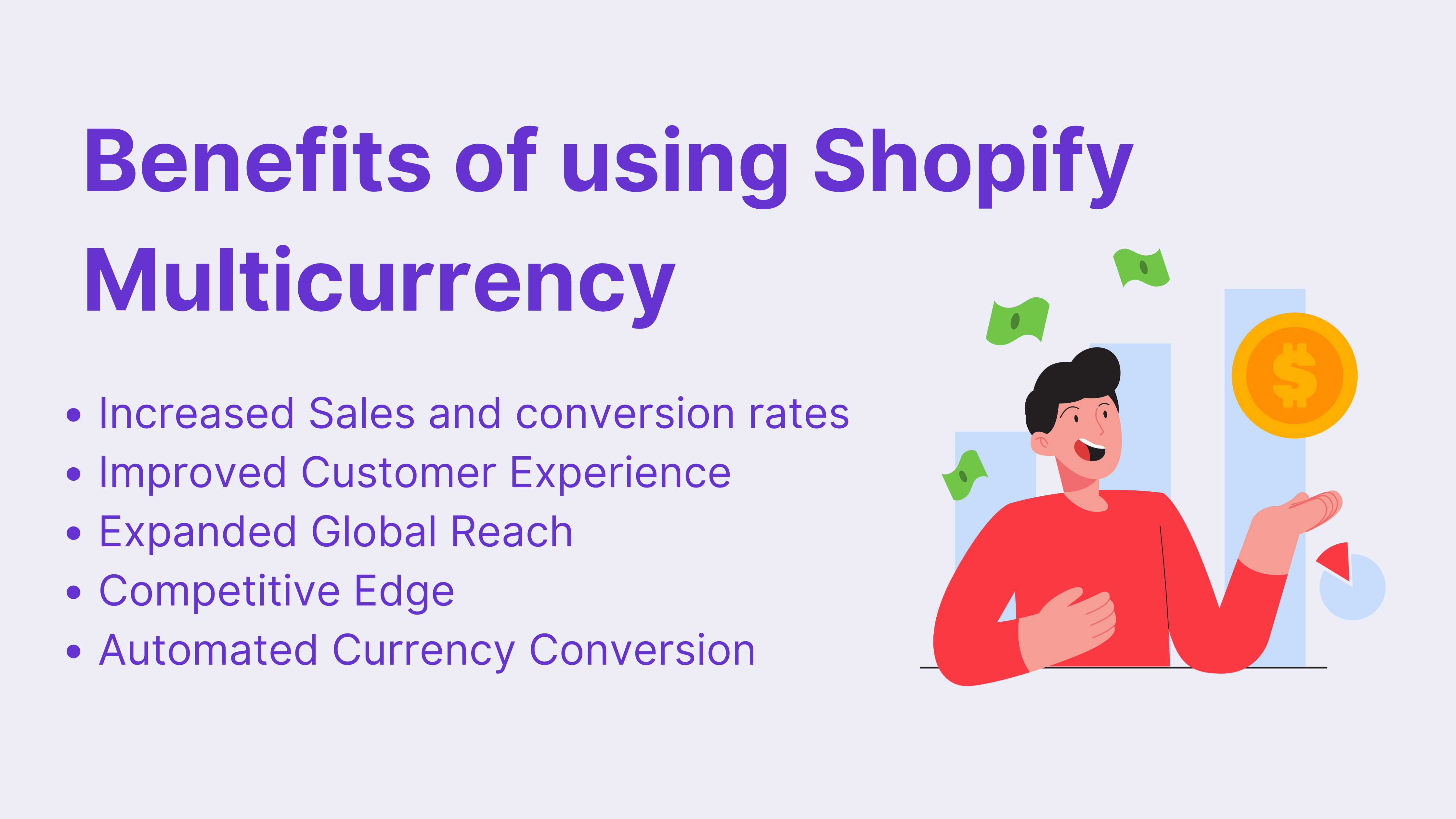
- Increased Sales and conversion rates: Offering prices in customers’ local currencies will encourage more people to complete their purchases since it eliminates the need for them to calculate exchange rates. This will increase your Shopify store’s conversion rate and will get more sales for your business.
- Improved Customer Experience: By displaying prices in the customer’s local currency, you make shopping more straightforward and transparent. This can reduce confusion and hesitation at checkout and ultimately lead to a smooth customer shopping experience.
- Expanded Global Reach: With Multicurrency, your store can attract and cater to customers from various countries. This broadens your market and allows you to tap into new customer segments that you might not have reached otherwise.
- Competitive Edge: Implementing Multicurrency can give you a competitive advantage over other stores that only sell in a single currency.
- Automated Currency Conversion: Shopify Multicurrency automatically updates exchange rates, which means the prices customers see are always current. This saves you a lot of time and effort as you don’t have to manually update prices and also reduces the risk of pricing errors.
How to enable multicurrency in Shopify? (For Shopify Payments enabled)
Step 1. Sign in to your Shopify account with your admin credentials.
Step 2. Head on to the ‘Settings’ on the left bottom side of your screen as shown in the below screenshot.
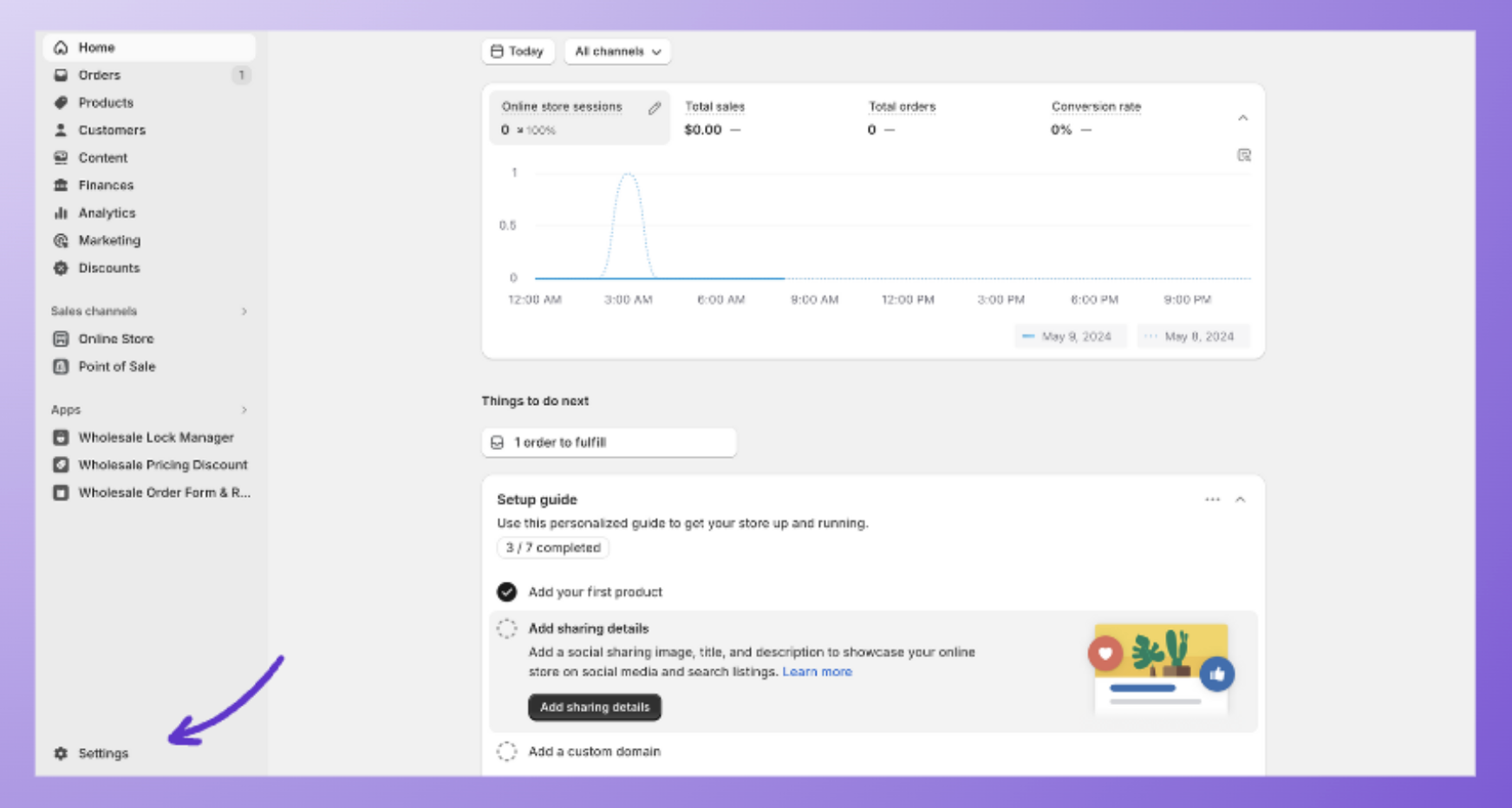
Step 3. Next, click on ‘Markets’ in the settings menu as shown in the screenshot below.
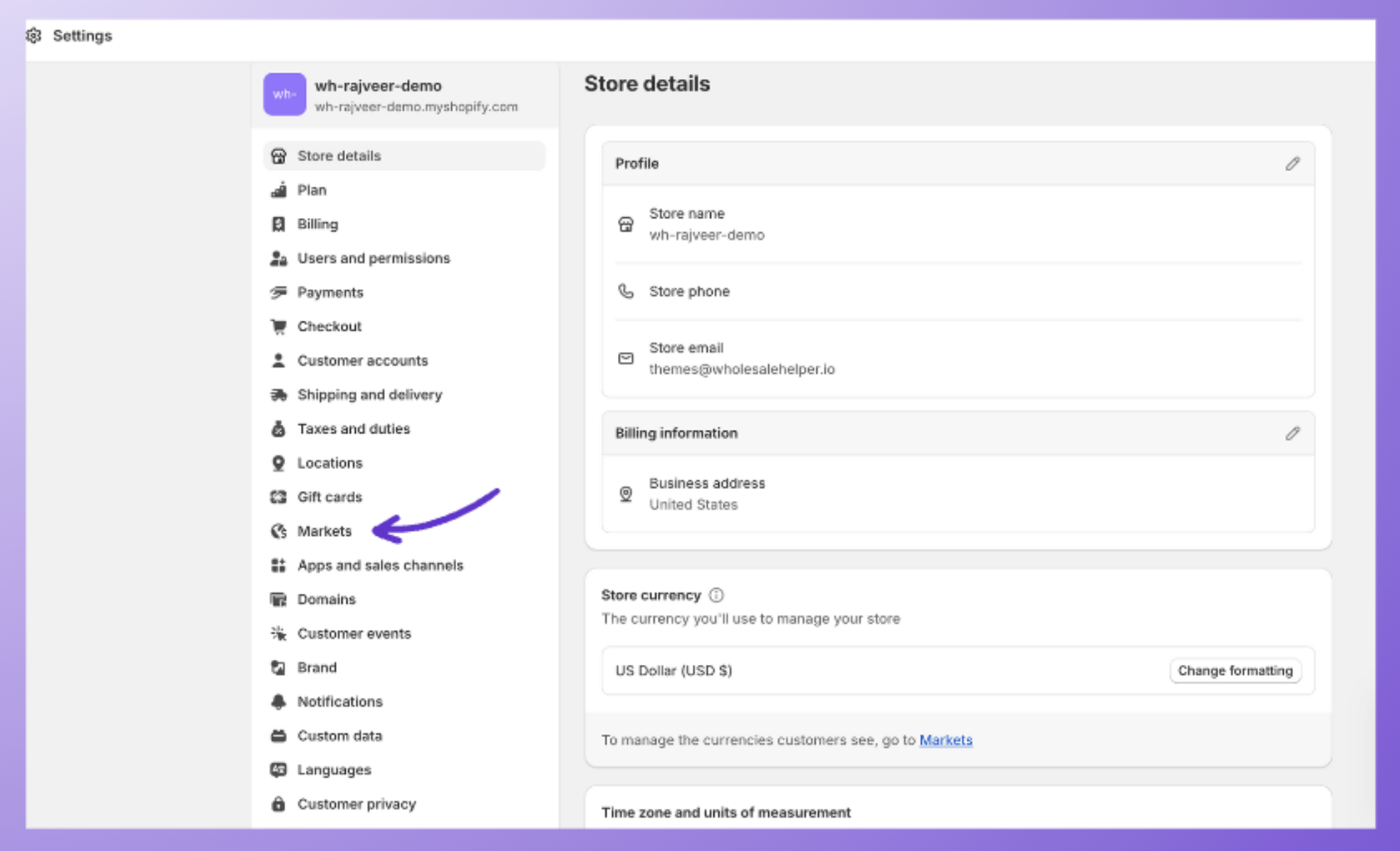
Step 4. Now, you have to add a new market. Click on ‘Add Market’ as shown below in the screenshot.
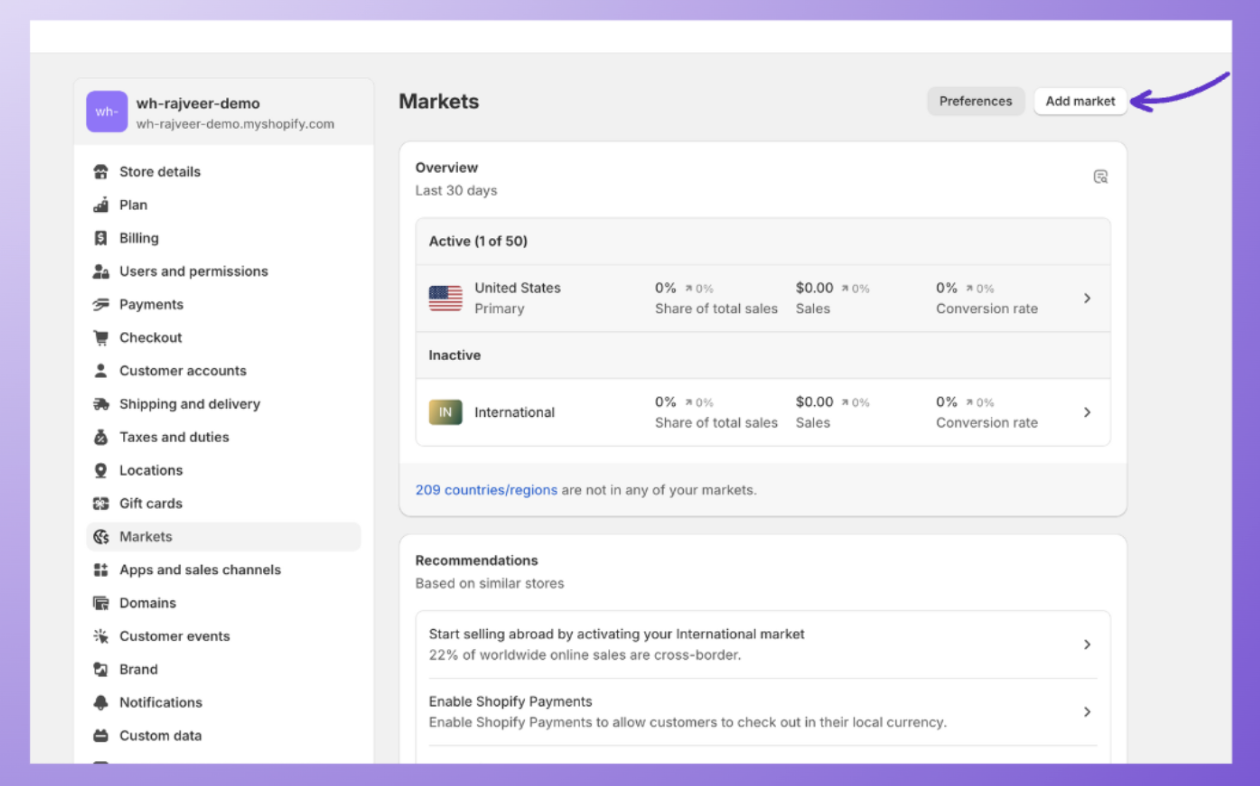
Step 5. Next, you have to select the country where you want to sell your products and show its local currency to the customers. This is depicted in the below screenshot. Once you have selected the country, click on ‘Add Market’.
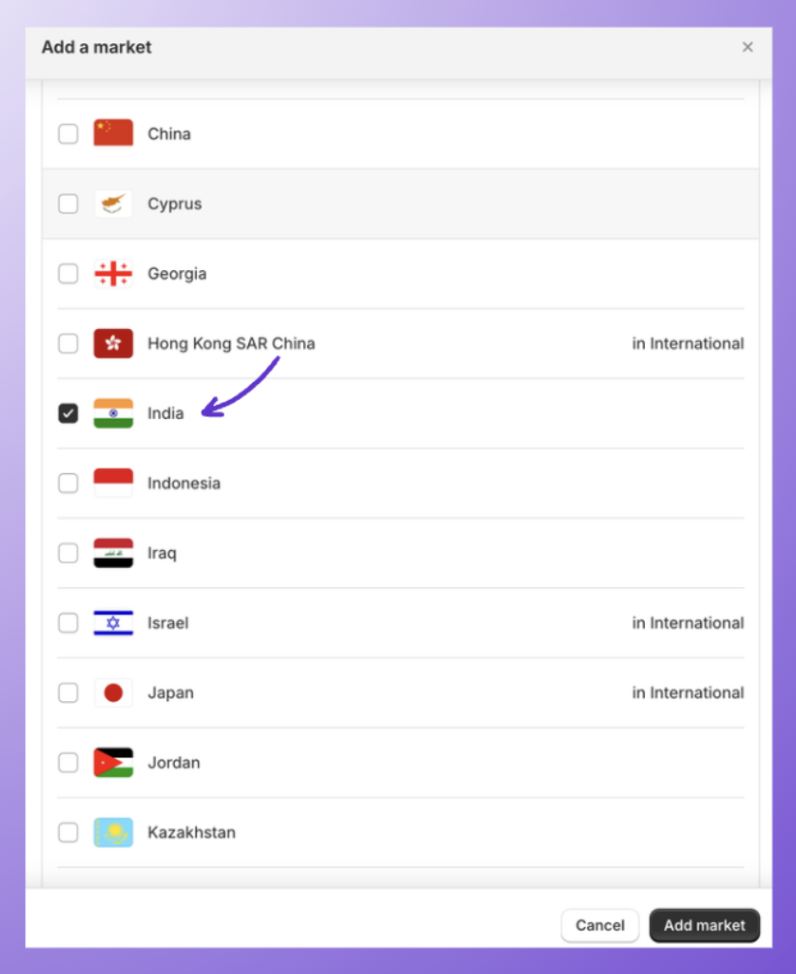
And that’s it, once you add the market, you can see all the markets that you have activated. By clicking on the markets, you can edit the prices manually and manage the currency. Note: this is applicable only if you have Shopify Payments enabled on your store.
What to do if Shopify Payments is not available in your country?
If you don’t have Shopify Payments supported in your country, customers won’t be able to complete the purchase in their local currency. However, you can use 3rd party apps present on the Shopify app store to show prices in local currencies on the storefront. However as stated, when customers proceed to checkout, they will see the default currency of your store and not the local currency of the customer.
Moreover, you can use a Shopify Geolocation app to add a country selector dropdown on your storefront. With this, customers can select their respective country from the dropdown menu and can see prices in their local currency and your store’s content is translated too in their local language.
Shopify Wholesale and Multicurrency
If you’re a wholesale business that wants to sell wholesale online and is planning to take your Shopify wholesale business global then you’ll needto keep check on many things like VAT and Taxation rules of the market, discount code conversions, advanced shipping rules, net payment terms and more.
Selling wholesale internationally with Shopify will require a tool that offers seamless integration between your wholesale platform and Shopify’s multicurrency features.
Wholesale Pricing Discount, an app by Wholesale Helper, recently launched its Global plan that allows Shopify merchants like you to take advantage of Shopify Markets features, and sell wholesale internationally by providing a localized experience.
With Wholesale Pricing Discount, Shopify store owners get everything they need to run wholesale on Shopify. They can offer personalized pricing and discounts based on various customer parameters like tags and their login status, offer net payment terms, create wholesale sign-up form, set advanced shipping rules, and now have a seamless integration with Shopify Markets.
Summing up
Shopify Multicurrency feature is a game changer for e-commerce stores planning to launch their store into new international markets. The feature by Shopify Markets has aimed to make global e-commerce accessible to small and medium-sized businesses.
When customers see their local currency displayed on the checkout page, they are more likely to complete the purchase since it builds trust and they don’t have to worry about interchange fees or any other hidden charges. This increased trust will increase your store’s conversion rate since you can tailor a personalized shopping experience to your customer irrespective of their location.
If you are a store selling wholesale on Shopify, apps like the Wholesale Pricing Discount B2B, can help you make the most out of Shopify’s Multicurrency feature and enable you to launch your Shopify Wholesale business internationally.
Offer Wholesale Pricing & Volume Discounts on Your Shopify Store
Try the Wholesale Pricing Discount app for Free!
Frequently Asked Questions
How many currencies are currently supported by Shopify Multicurrency?
Shopify currently supports around 130 currencies from across the globe.
Do I need a certain Shopify plan or upgrade to use Multicurrency?
Shopify Multicurrency is available on all Shopify plans, but one must have Shopify Payments enabled to use this feature.
Is there a fee for using Shopify Multicurrency?
There are no additional fees for using Shopify Multicurrency itself. However, standard transaction fees still apply, and currency conversion charges may be included depending on your Shopify Payments plan.
How often are currency exchange rates updated in Shopify Multicurrency?
Shopify updates the exchange rates several times a day to ensure that the prices are accurate and reflect the latest market conditions.
Can I set custom pricing for different currencies in Shopify Multicurrency?
Yes, Shopify allows you to set custom prices for different currencies if you want to adjust pricing based on market conditions or purchasing power parity in different countries.

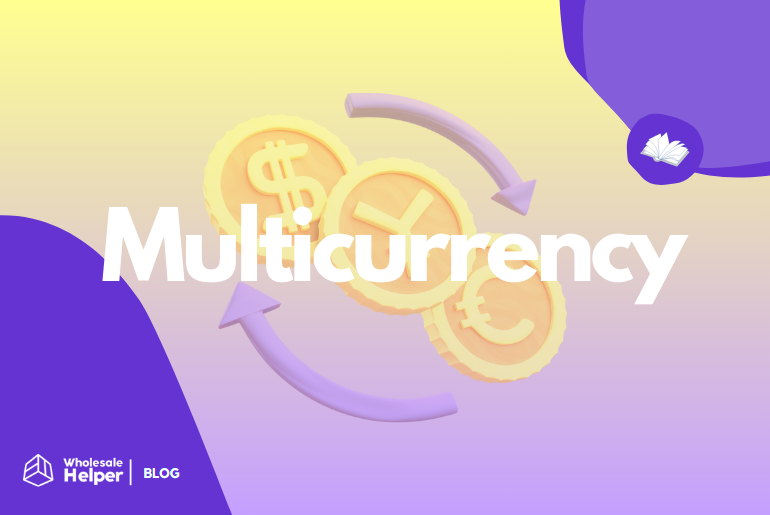





![Shopify Payments – All You Need To Know [in 2024] Shopify Payments - All You Need To Know](https://wholesalehelper.io/blog/wp-content/uploads/2024/05/Shopify-Payments-All-You-Need-To-Know.png)